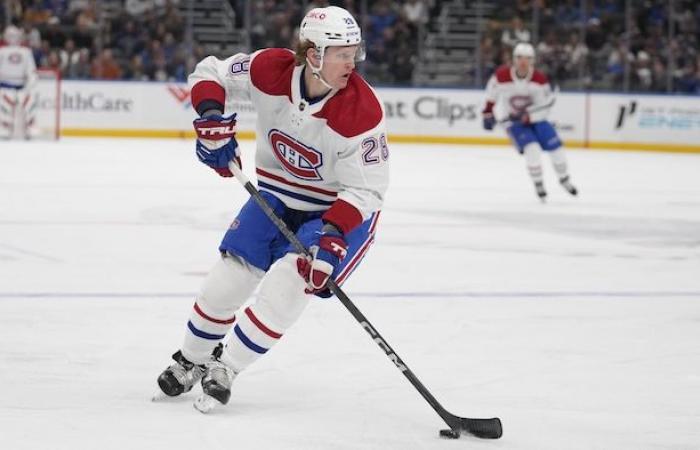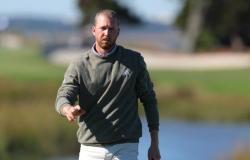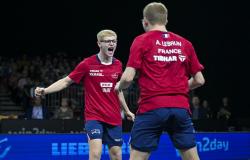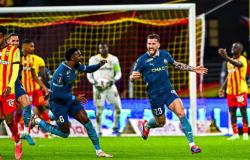Martin St-Louis was briefly Marc Bureau’s teammate when he was starting his career in Calgary and Bureau was finishing his. However, it was not him who invited him to come and help the Canadiens centers on Monday in Brossard.
No, it was rather general manager Kent Hughes who beckoned the former Habs forward to come and give advice on faceoffs, the area which has long been his field of specialization.
Bureau had approached the Canadian during the Marc Bergevin era to lend a hand, but his offer remained a dead letter. It’s not too soon that the organization uses a specialist like him.
When you can benefit from expertise like that, you do it, said St-Louis. I think we’re a pretty avant-garde organization in this regard and we want to check as many boxes as we can.
A priori, the head coach mentions that there is no specific problem with his team’s faceoffs, even if the Canadian appeared before Monday’s matches in 25th place in the league, at 47.6 % efficiency.
This is a decline from last season’s rate of 51.5%.
However, the Canadian’s main collective weakness on faceoffs is in the neutral zone, where his success rate of 43.1% places him ex-equal ranked 31st in the league. Otherwise, he is 11th in offensive zone faceoffs and 21st in his territory.
Having already spoken with him, we know that Bureau tends to downplay the importance of neutral zone faceoffs compared to those that are more situational. This perhaps explains why St. Louis is not overly bothered by this particular facet of the game.
But whether with equal strength, numerical superiority or inferiority, the CH systematically finds itself in the last third. There is definitely room for improvement.
Start of the Twitter widget. Skip the widget?End of Twitter widget. Return to start of widget?
Gain consistency
Everyone knows that faceoffs aren’t Kirby Dach and Alex Newhook’s cup of tea. But those who take more, Nick Suzuki, Christian Dvorak and Jake Evans, could all do better at the start of the season.
Personally, I think I have some games that go very well and others that don’t,” said Suzuki, who dominates the team’s crosses with a success rate of 49.5%. I can’t be at 30% one evening and 60% the next without having any consistency. There’s room to clean that up a bit.
Dvorak was dominant in the faceoff circle last year with a success rate of 57.8%, in addition to being consistent in all three zones of the ice.
However, his performance of 48.9% at the start of the season is below what he has always given.
We’re at 12 games, it’s not the largest sample, but you still want to make sure that we start to improve, said Dvorak. I think we have guys who have a good history on faceoffs.
Some noted that the Canadian allowed a lot of goals following lost faceoffs, which Evans somewhat questions. These goals were perhaps more related to defensive actions than to the faceoff as such.
We discussed them, I don’t think they occurred directly following faceoffs, argued Evans. Teams draw plays and the whole thing lasts two seconds. If the goal comes 10 seconds later, it’s not really a question of a faceoff anymore.
But yes, it’s something we have to work on, and having possession of the puck from the faceoff is important, he added. We weren’t very good at that.
Open in full screen mode
Christian Dvorak and Alex Newhook are the Canadian’s only left-handed centers. The team has a surprising amount of right-handed centers.
Photo : AP / Jeff Roberson
Advantage for right-handers
Marc Bureau encouraged CH players to use their backhand rather than their forehand in the faceoff circle, because success rates are very often better by adopting this technique.
We will see if this will change Dvorak’s habits, he who is used to contesting faceoffs with his forehand.
The use of the backhand should be even more obvious for the Canadian’s centers, who are mostly right-handed. The majority of centers on the circuit shoot from the left while being natural right-handers. This means that their strong hand holds the top of the stick, and not the bottom.
A right-hander who tries to win the faceoff on his backhand, for his part, has maximum strength at his disposal given that his strong hand is lower. He is therefore at an advantage.
This is the kind of detail that the Canadiens centers had never thought of.
Guess I should be better than that, huh
, right-hander Evans dropped with a smile.
Evans admits to having problems currently when the faceoff takes place on the left side. He feels like he has less room to win on this side, and using his backhand more often could give him a helping hand.
The important thing in this situation is to maintain excellent communication with your teammates and your goalie, especially if the puck has a chance of ending up closer to the Canadian’s net.
Hard, hard in his zone
Centers who are in a defensive position – in their territory or in the near portion of the neutral zone – must place their stick on the ice first. The same goes for visiting team centers during faceoffs at center ice. There are several centers for whom this changes nothing, but Dvorak, who had won 56.2% of his defensive faceoffs since arriving in Montreal, has won only 34.0% so far this season .
Placing your paddle second gives you an advantage, it helps the offensive team a little, but for both, there is a lot of synchronism that comes into play
he recalled.
In numerical inferiority, not only is the stick placed first which can harm, but the attacking team chooses on which side it wants to have the face-off. And if, on top of that, the face-off n is not won outright, the team with an extra player can more easily gain possession.
All of these factors may help explain why Evans is only posting a 42.6% success rate thus far on the penalty kill. Taking faceoffs short of a man has never been his strength.
A question of attitude
We can try to be faster, or we can want to benefit from an advantage in terms of size, the fact remains that the tactics will change depending on the opponents and the game situation. Suzuki compared this in a game of rock-paper-scissors.
But what does not change – and this is another element that Bureau insisted on – is that it is important to present yourself in the faceoff circle with a lot of confidence, to impose it against your opponent , and even use that trust over time to develop rapport with the linesmen.
Evans may be a veteran, but he feels he himself is vulnerable at the moment to a certain drop in confidence in this facet of the game.
Sometimes it’s a matter of timingmy synchronism was a little lacking, confided Evans. But sometimes it’s also because of the linesmen. During the match against Washington, the linesmen were very picky and it completely messed up my timing.
It’s a question of timingbut confidence has a lot to do with it. When you lose several faceoffs in a row, you blame yourself, you get annoyed, and then you lose your synchronicity or you get a little stuck in your head.
A faceoff is a very stealthy gesture in a hockey game, but there are a host of things that must be taken into account to carry it out successfully.
Something tells us that this isn’t the last time we’ll see Marc Bureau in Brossard…
End of widget. Return to start of widget?







